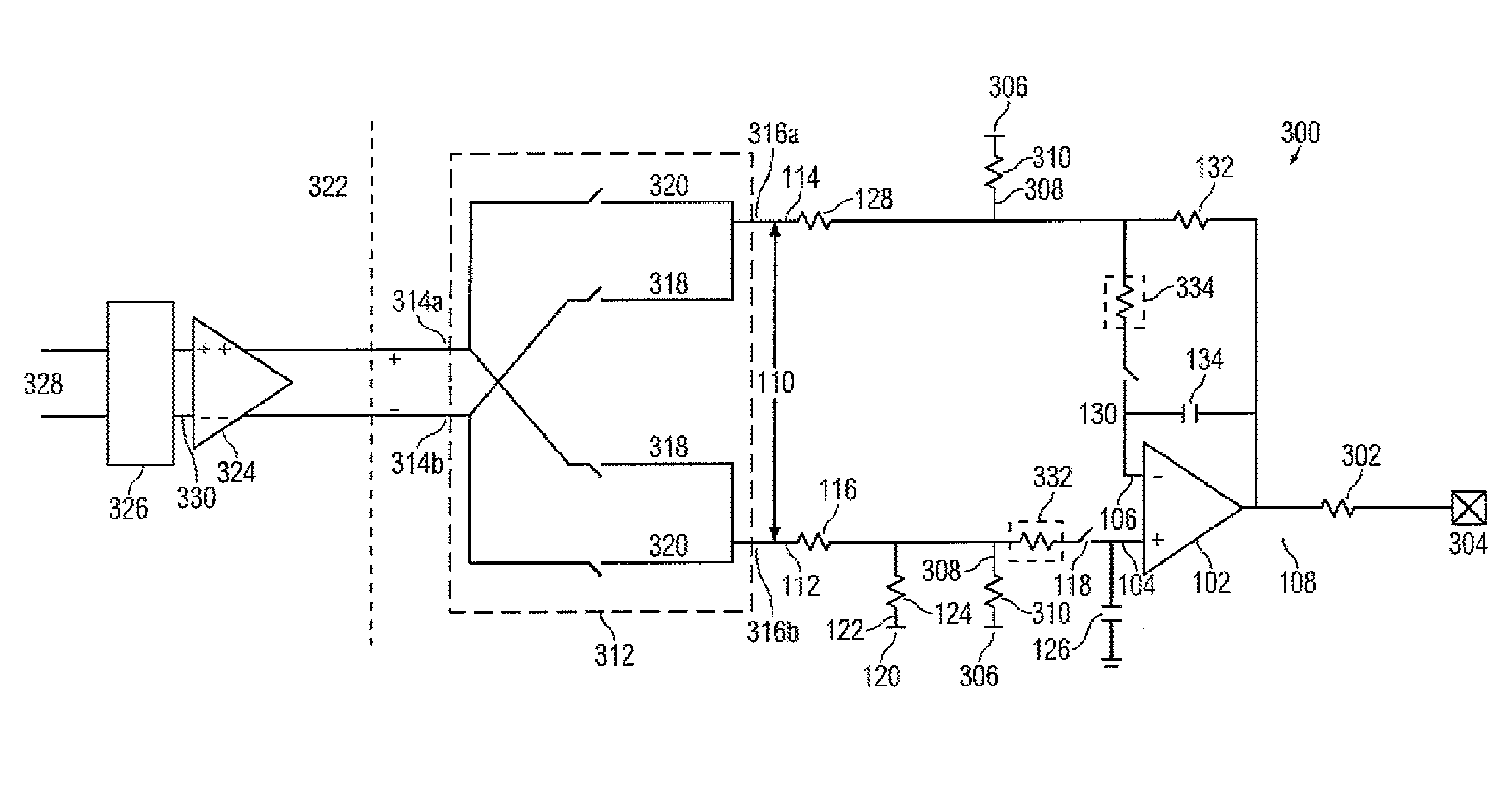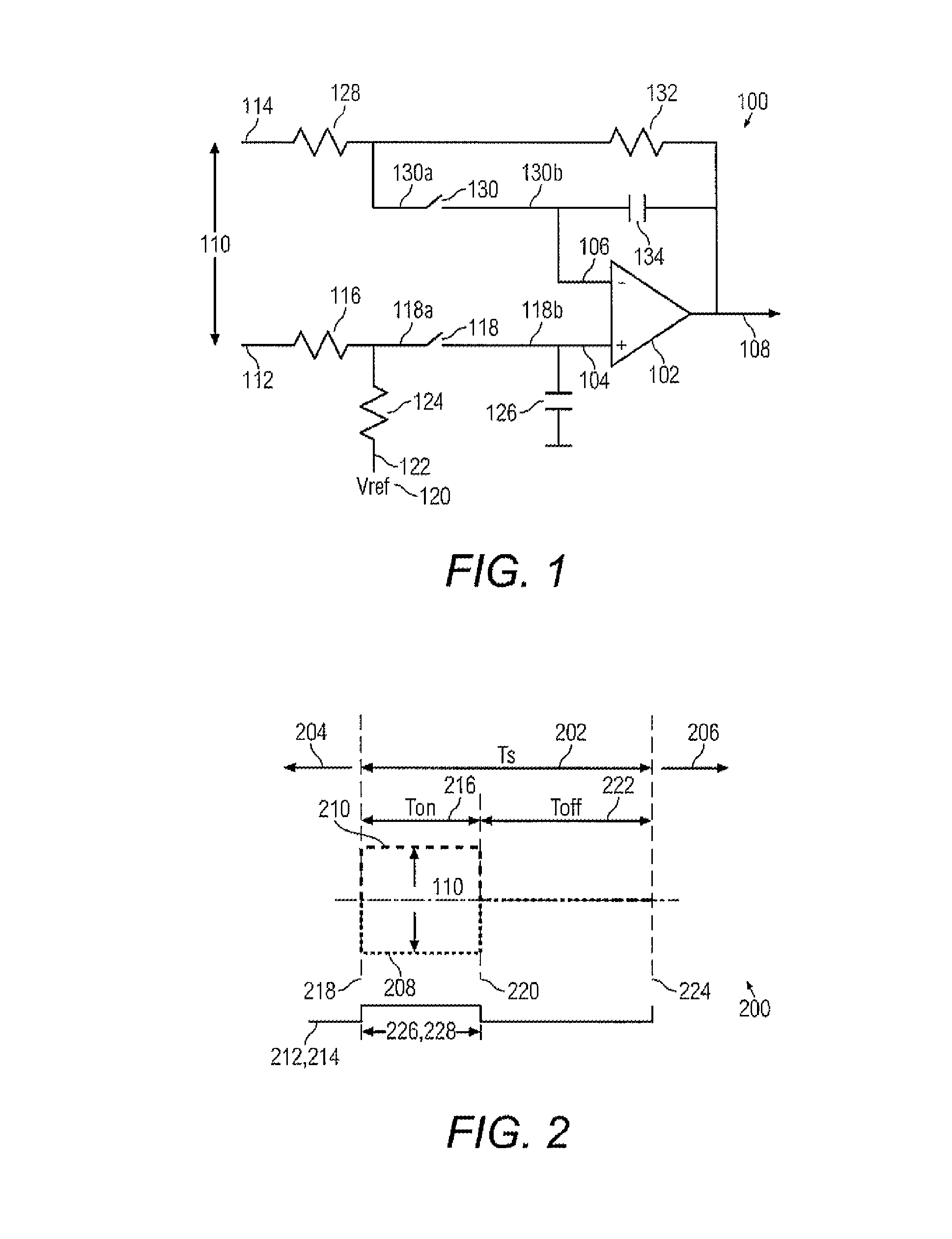Low pass filter circuit
a filter circuit and low-pass technology, applied in the field of low-pass filter circuits, can solve the problems of noise generation in the electric circuit, obvious undesirable, and noise generation in the sensing circuit, and achieve the effect of not being without limitations
- Summary
- Abstract
- Description
- Claims
- Application Information
AI Technical Summary
Benefits of technology
Problems solved by technology
Method used
Image
Examples
first embodiment
[0018]Referring now to FIG. 1, a low pass filter circuit 100 in accordance with the invention is illustrated. The low pass filter circuit 100 comprises an amplifier 102 having a first input 104 and a second input 106. In the embodiment of FIG. 1, the first input 104 is on a non-inverting summing node of the amplifier 102 and the second input 106 is on an inverting summing node of the amplifier 102. The amplifier 102 is a single-ended output amplifier, having an output 108. A differential signal 110 is provided to the first and second amplifier inputs 104, 106 on first and second lines 112, 114, respectively. The first line 112 is connected to the amplifier first input 104 through a first resistor 116 and a first switch 118. A reference voltage supply 120 is also connected to the amplifier first input 104 with a first voltage supply line 122 by way of a second resistor 124. As shown in FIG. 1, the first and second resistor 116, 124 are connected to an input terminal 118a of the switc...
second embodiment
[0043]Turning now to FIG. 3, a low pass filter circuit 300 in accordance with the invention is illustrated. Many of the components of the circuit 300 of FIG. 3 operate in a manner identical with corresponding components in the circuit 100 of FIG. 1. Such components are identified with the same reference numerals as the corresponding components in FIG. 1, and a detailed discussion of these components is not repeated. However, in summary, the circuit 300 is provided with an amplifier 102 for receiving a differential input signal 110 on the first and second lines 112, 114. Circuit 300 also provides a single-ended output 108 of the amplifier 102. However, in the circuit 300, an output resistance 302 may optionally be provided for connection at output terminal 304 to another circuit (not illustrated), in which the output resistance 302 may act as a resistance in a RC filter of the other circuit. Use of a subsequent RC filter, of which resistor 302 constitutes the resistance in combinatio...
PUM
 Login to View More
Login to View More Abstract
Description
Claims
Application Information
 Login to View More
Login to View More - R&D
- Intellectual Property
- Life Sciences
- Materials
- Tech Scout
- Unparalleled Data Quality
- Higher Quality Content
- 60% Fewer Hallucinations
Browse by: Latest US Patents, China's latest patents, Technical Efficacy Thesaurus, Application Domain, Technology Topic, Popular Technical Reports.
© 2025 PatSnap. All rights reserved.Legal|Privacy policy|Modern Slavery Act Transparency Statement|Sitemap|About US| Contact US: help@patsnap.com



